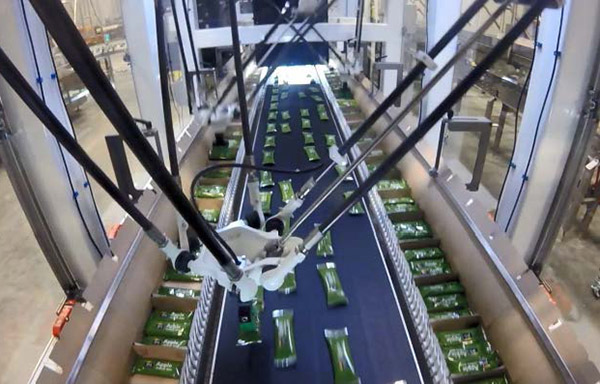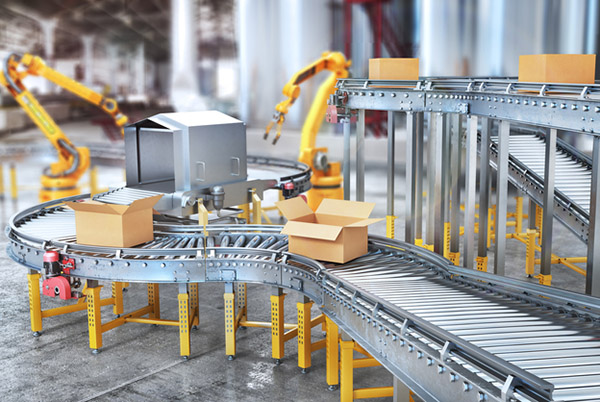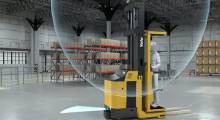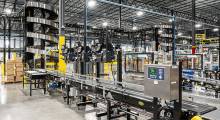Many organizations are facing new challenges in today’s world, including nationwide labor shortages, increased employee turnover, rising labor and material costs, and increased demand. Organizational leaders must determine to overcome these obstacles, and many are wondering if adding robots to the warehouse is the answer. As executives, managers, and operators turn to automation to address these challenges, they should consider certain things before investing in robotics.
The 'why' behind robotic automation
Robots are being deployed at a higher rate than ever before because of their reliability, flexibility, and ease of use. Even so, organizational leaders are still left asking why they should invest in a new technology and how robotics will affect their workforce.
In most cases, robots are not meant to replace an organization’s existing workforce, but rather to support more efficient operations with less burden on the associates. There are several ways in which adding robotic automation to the warehouse can support an existing workforce:
- Offloading monotonous tasks: Advancements in add-on software allow robots to perform actions that were once possible only to do manually. This will free up associates’ time to focus on other tasks, such as direct customer service.
- Increasing collaboration: Safety enhancements allow for humans and robots to interact in certain tasks while also keeping associates safe. This will allow for some tasks to be completed much faster than if they were being done only by an associate.
- Decreasing workplace injuries: Robots are being used to perform tasks that result in the most workplace injuries. This means that associates are being kept out of dangerous situations and allowed to perform tasks in a safe manner.
- Increasing efficiency: By design, robots are able to execute tasks at higher speeds and with greater precision than humans. This ultimately results in higher throughput without increasing the workload for associates.

3 considerations regarding your robotics investment
There are plenty of potential benefits of using robots in the warehouse, but there are still several things to consider before making the investment. Take these steps before investing in robotic automation to increase success and reduce risk.
- Develop an “automation roadmap.” Before taking the leap into robotics, you need to identify the areas where automation is needed and what you want the automation to achieve. Automation is a marathon, not a sprint. Depending on the scope, your roadmap could extend several years and involve several types of automation, such as industrial robots, collaborative robots, autonomous mobile robots, and more. The applications for robots in the warehouse are endless, and new technologies are constantly creating new use cases for integrators.
- Find the right partner. A company considering robotics for its facility needs to choose a partner to help develop and implement the automation. Prioritize finding a partner that has deep knowledge within your industry in addition to the technology you would like to implement. You should also consider the culture and size of a partner and how they align with your organization’s goals. As you move forward with your project, the location and support structure of your partner will also be important to consider.
- Consider the return on investment. ROI is one of the most important factors to consider when moving forward with automation. Many companies take a simple approach and look at the operational cost only in regard to labor savings, but there are much more nuanced returns that should be accounted for with automation. A broader perspective of robotics ROI will include reduced employee turnover and associated training costs, reduced work-related injuries and resulting time off, and reduced employee illnesses and no-shows resulting in increased production. Another piece of ROI to consider with robotics is the ability to repurpose the assets. As your business changes and operations need to be adjusted, most robots can easily be relocated to perform a new task with minimal changes to tooling and programming.
Get started now
With so many options for the types of robots available and their applications in the warehouse, it can be difficult to know where to start. Companies should start their robotic automation journey with a small, low-risk application, like a palletizing project.
These applications tend to be easier in scope and have high success rates, allowing you to get organizational buy-in to robotic automation, gain comfort with the capabilities of robotics in you facilities and open the door for the next application.

About the author
Kyle Smith, vice president of automation at enVista, has a Bachelor of Science degree in mechanical engineering and over 18 years of material handling industry experience. He specializes in conveyor and robotic systems design, integration, and engineering management.
Prior to joining enVista, Kyle worked at HCM Systems Inc. designing and integrating conveyor systems, building and managing a robotics team, and leading the engineering team.
Article topics
Email Sign Up

















